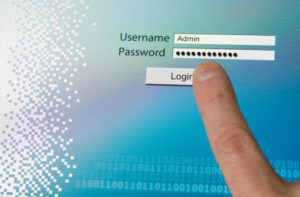How to Access that Old Email Account
Have you ever wondered if you could access your old email accounts? You might want to look for some old files, or maybe need information about an old contact. Whatever the reason, there is good and bad news when it comes to accessing old email accounts.
 The best thing that you can do is to use the provider to find the old email account or old messages. All of the major providers, including Outlook, Gmail, Yahoo, and AOL, have recovery tools available. If the email address is from a lesser player in the email game, again, you might be out of luck.
The best thing that you can do is to use the provider to find the old email account or old messages. All of the major providers, including Outlook, Gmail, Yahoo, and AOL, have recovery tools available. If the email address is from a lesser player in the email game, again, you might be out of luck.
First, Know the Protocol
Frankly, the next 3 paragraphs might be confusing. If they don’t make sense to you jump to Do You Remember the Service or Email Address?
The first thing you have to do is know the protocol your provider uses. There are two different protocols to consider when trying to access old messages: POP3 or IMAP.
POP3 protocols essentially download messages from a server to a device. IMAP just syncs your messages between your device and the server. Most email services default to an IMAP protocol, but it’s very possible that an older email account would have been set up to use POP3. If this is the case, and the provider deletes the messages off the servers when downloaded via POP3, this is not good news…those messages are gone. Even if you eventually get access to these accounts, if you have downloaded the messages to a computer or smartphone, they are gone from the server.
There is better news if you used IMAP…though, again, this is assuming nothing has been deleted. Some providers will delete accounts that are inactive for a certain amount of time. If the account is deleted, those messages are gone. Check the account deletion policy of the email provider to see if your account might still be active, and ultimately, accessible.
Do You Remember the Service or Email Address?
If you remember the email address and not the password, try the password reset link and if, and only if, you set up a backup email for recovery, then you’re on Golden Pond.
Now, what happens if you can’t remember what service you used or even the email address you used? There is still hope.
First, search for your name in the email account you use now. You might have sent something to yourself from an old account. Another option is this: if you remember the old provider, you can also search for that. You also might want to search your computer to see if there are old documents with your old email in there. You also might have set up a recovery email address or phone number that you can use to access the account.
Robert Siciliano personal security and identity theft expert and speaker is the author of Identity Theft Privacy: Security Protection and Fraud Prevention: Your Guide to Protecting Yourself from Identity Theft and Computer Fraud. See him knock’em dead in this Security Awareness Training video.

 That’s what’s happening with business executives in select industries (e.g., chemical operations, manufacturing), says a report at threatpost.com, citing a finding from Dell SecureWorks.
That’s what’s happening with business executives in select industries (e.g., chemical operations, manufacturing), says a report at threatpost.com, citing a finding from Dell SecureWorks.


























